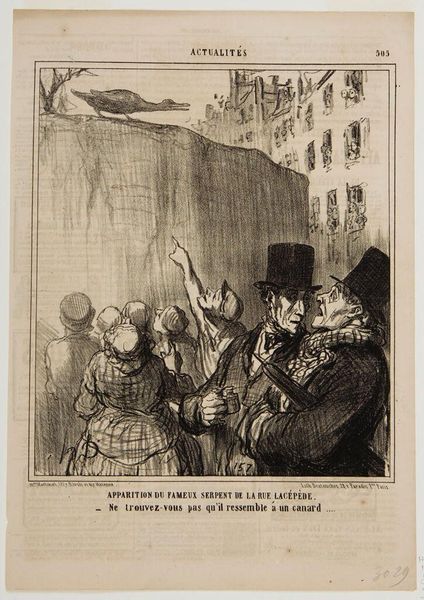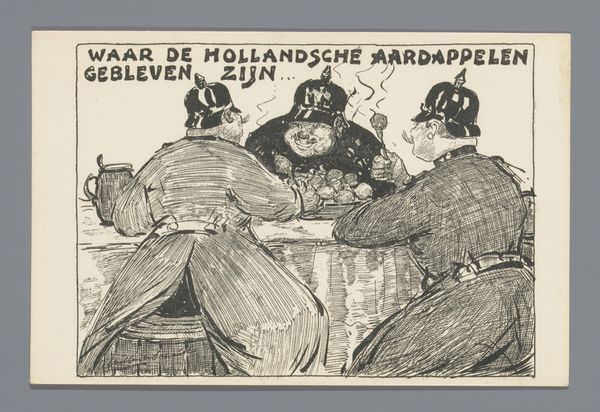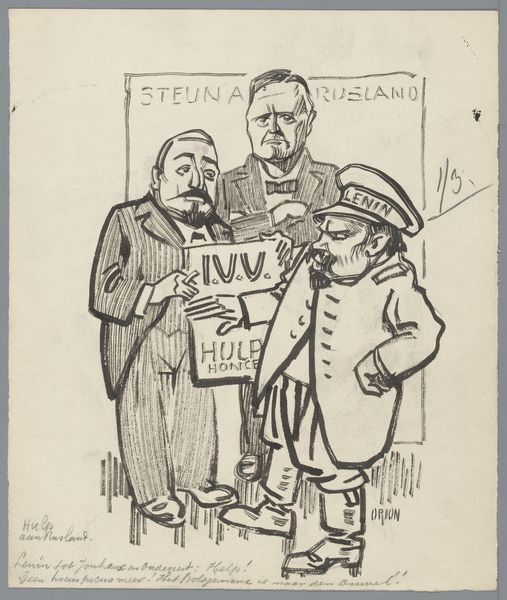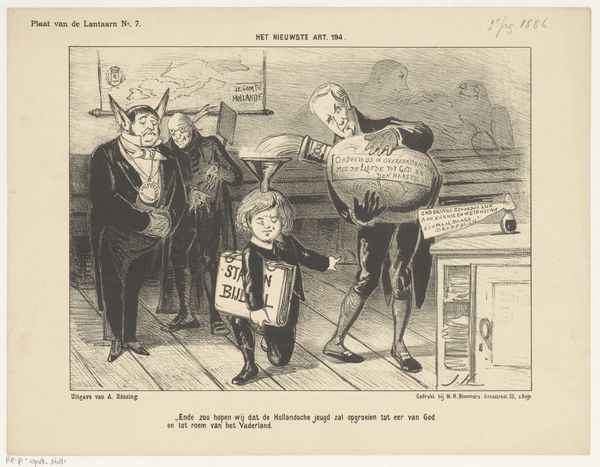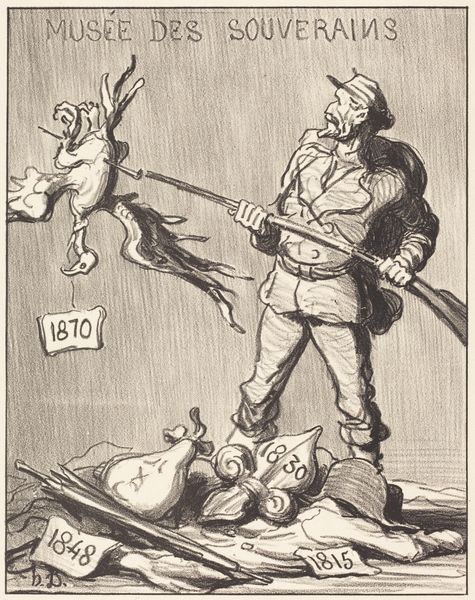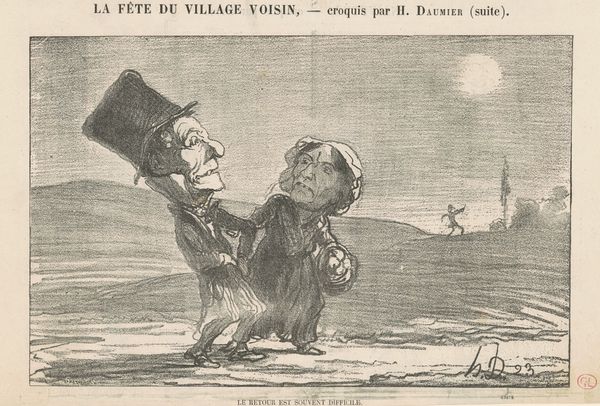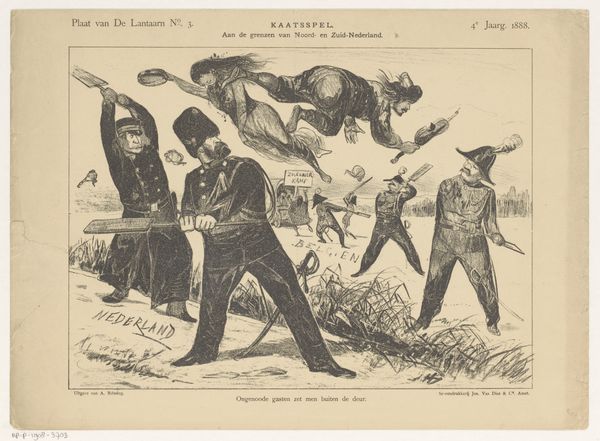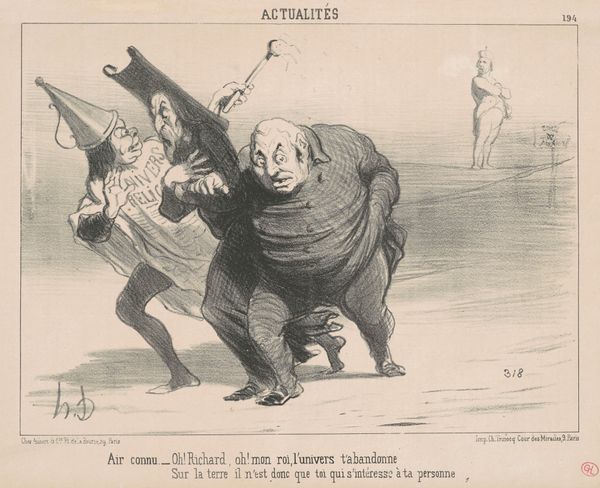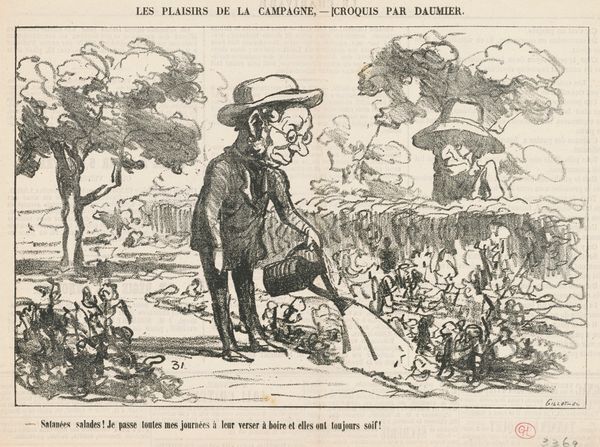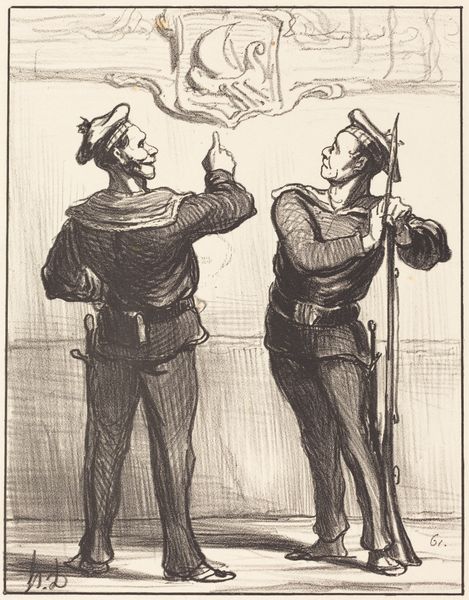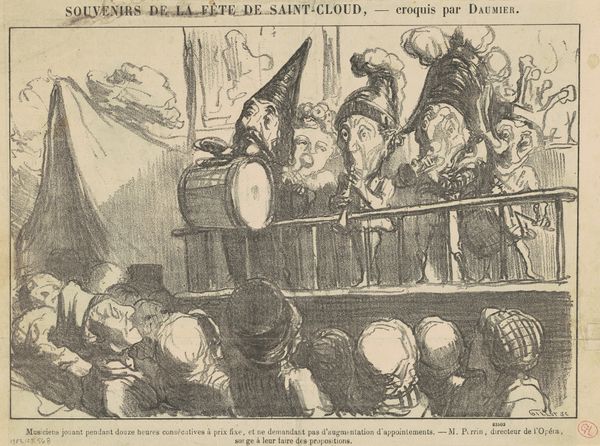
Spotprent over de behandeling van den negenurige werkdag in de (Amsterdamse) gemeenteraad, 1910 Possibly 1910 - 1930
0:00
0:00
drawing, lithograph, print, ink
#
drawing
#
art-nouveau
#
lithograph
# print
#
traditional media
#
ink
#
modernism
Dimensions: height 315 mm, width 427 mm
Copyright: Rijks Museum: Open Domain
Curator: Here we have a striking lithograph, "Spotprent over de behandeling van den negenurige werkdag in de (Amsterdamse) gemeenteraad, 1910" – a caricature, created by Jan Rinke sometime between 1910 and 1930. Editor: My first impression is one of raw frustration and social tension. The harsh lines and stark contrast in ink make this scene feel immediate and volatile, like a photograph capturing a street incident. Curator: It's a potent image, isn’t it? Jan Rinke captures a critical point of early 20th-century politics: labor reform, specifically concerning the nine-hour workday debate within Amsterdam's city council. Consider how the central figure of authority, a police officer, is symbolically blocking out the 'nine-hour workday' message. Editor: Absolutely, it's heavy with symbolic conflict! We've got two working-class children, one on either side, almost mirror images, accused of vandalizing this call for better labor laws. And it appears the children say “No Boss, we did not vandalize that." Curator: Notice how the act itself—obstructing the nine-hour workday–is cast as shadow and obstruction. The scattered papers on the ground speak to shattered ideals and thwarted progress. And behind, more shadowy figures and authority figures! What sort of emotions might have moved Rinke? Editor: It reads to me as a warning, and also I note a critical stance towards those perceived to be resisting change. By portraying those defending labor rights as essentially innocent children being wrongly accused by authority figures, Rinke’s emotional message resonates. I can feel a rising sense of resistance. Curator: Indeed, Rinke adeptly uses well known tropes about “unruly children" and “overzealous police” to generate emotion that's deeply interwoven with the politics of his era. This political lithograph not only gives us a time capsule but evokes lasting issues of class, social control, and what’s fair. Editor: This work serves as an entry point for discussing broader conversations around economic justice. What really grabs my attention is how those core issues persist across a century—it's almost eerie, seeing how this dialogue repeats through generations.
Comments
No comments
Be the first to comment and join the conversation on the ultimate creative platform.
